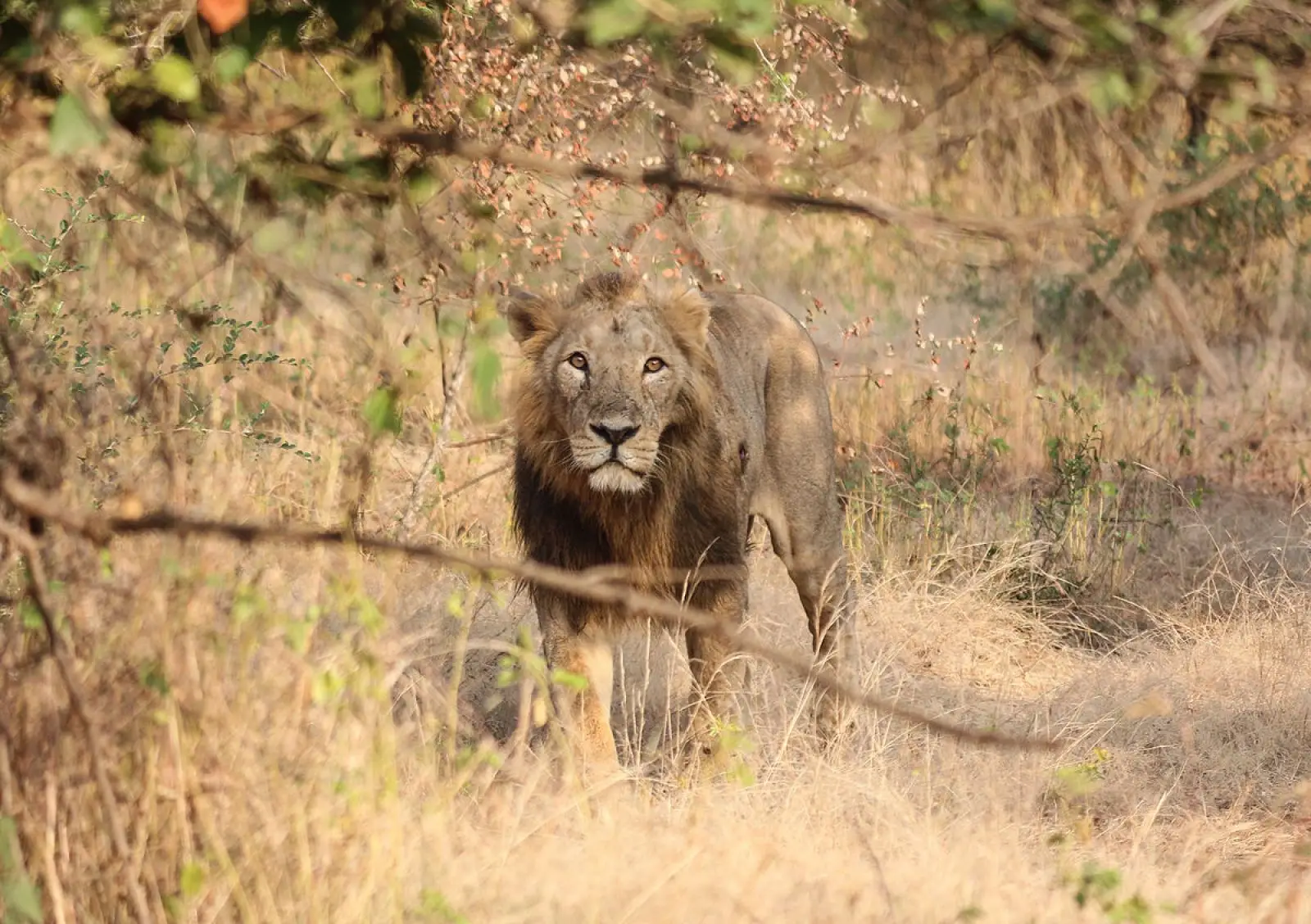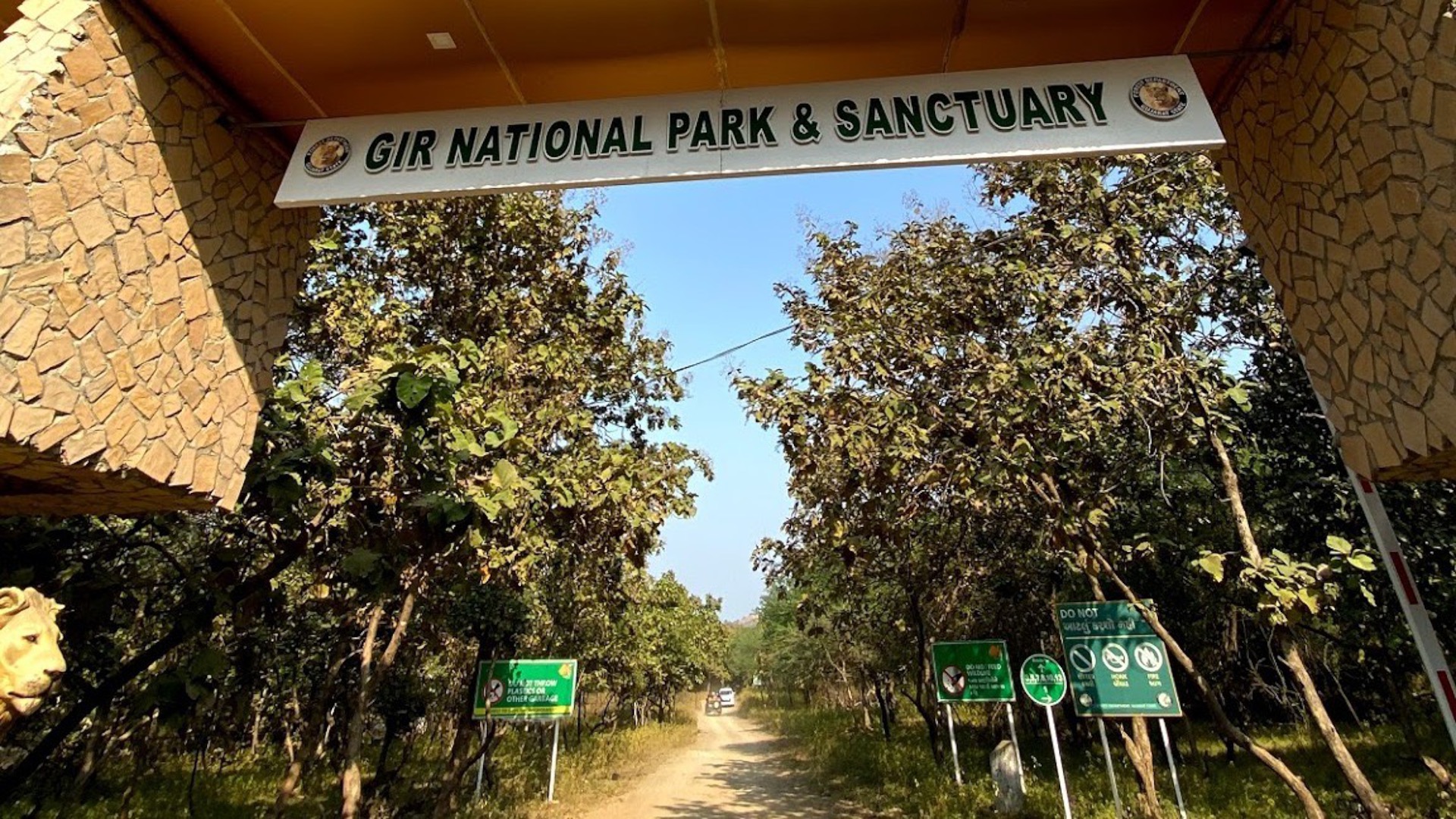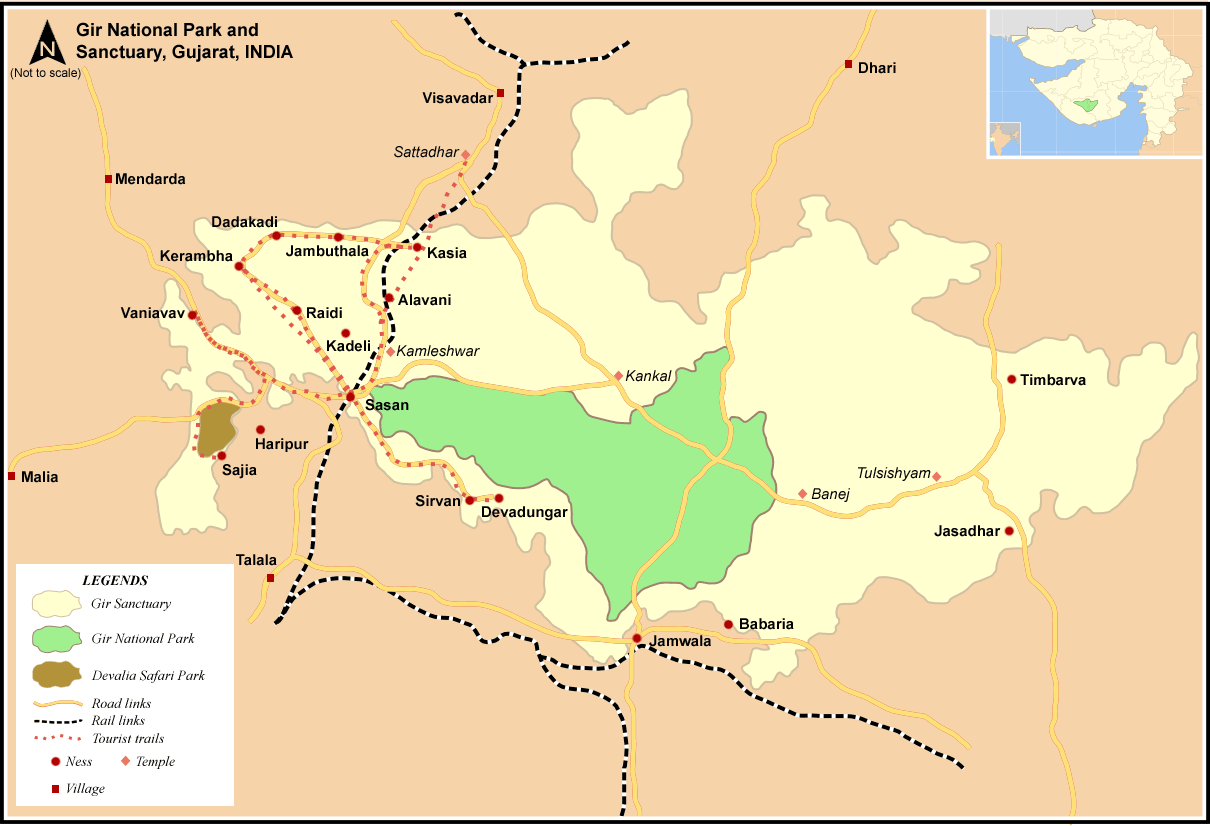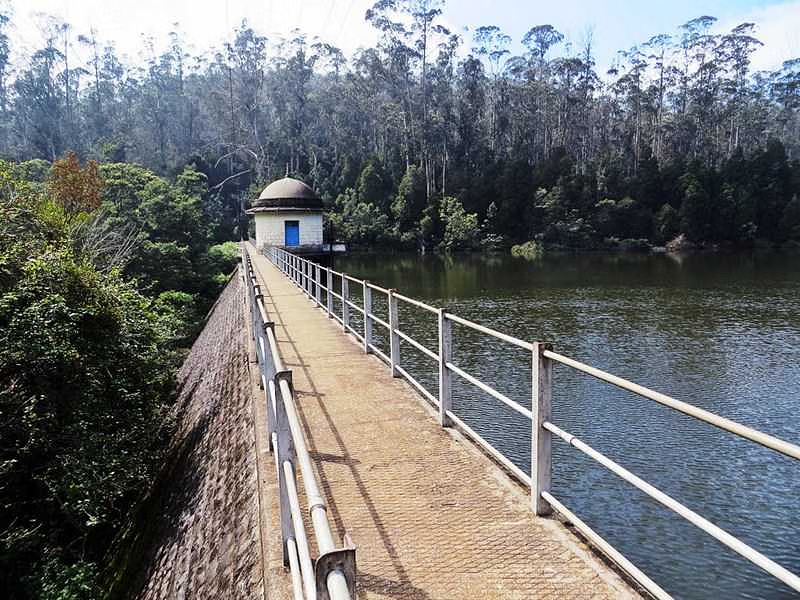Nestled in the Saurashtra peninsula of Gujarat state, Gir National Park stands as India’s last refuge for the majestic Asiatic lions. Determining the best time to visit Gir can make the difference between an ordinary trip and an extraordinary wildlife adventure. Understanding the best time to visit Gir becomes crucial for witnessing optimal wildlife activity and comfortable weather conditions. This comprehensive resource will help you plan your perfect safari experience while exploring everything this remarkable destination has to offer.
Table of Contents
Best Time to Visit Gir: Complete Seasonal Guide
The best time to visit Gir depends on your preferences for weather, wildlife activity, and crowd levels. Here’s a detailed breakdown of what to expect throughout the year:
| Season | Months | Temperature | Wildlife Activity | Crowd Level | Best For |
|---|---|---|---|---|---|
| Winter | December – February | 10°C – 25°C | High | High | First-time visitors, comfortable weather |
| Spring | March – April | 20°C – 35°C | Very High | Medium | Wildlife photography, balanced experience |
| Summer | May – June | 25°C – 42°C | Peak | Low | Serious wildlife enthusiasts, lion sightings |
| Monsoon | July – October | 25°C – 35°C | Park Closed | None | Conservation breeding season |

Weather patterns, animal behavior, and tourist crowds vary significantly throughout the year, affecting your overall Gir experience. Let’s explore each season in detail to help you choose your ideal visit timing based on comfort levels and wildlife activity.
Winter Season (December to February) – Peak Tourist Season
Winter marks the best time to visit Gir for most travelers seeking comfortable weather conditions. The pleasant temperatures ranging from 10°C to 25°C create ideal safari conditions, making winter the preferred best time to visit Gir for families and first-time visitors. Lions are more active during cooler hours, and the dry weather ensures excellent visibility across the forest’s 1,400 square kilometers.
During this period, water sources become concentrated, drawing diverse wildlife to specific locations and making animal sightings more predictable. However, being peak season means higher accommodation costs and crowded safaris, so advance booking becomes essential.
Spring Season (March to April) – Optimal Balance
Spring offers an excellent compromise between comfortable weather and exceptional wildlife viewing. As temperatures gradually rise to 35°C, animals become more active around water sources while the weather remains manageable for tourists. Many consider spring as an ideal best time to visit Gir for balanced experiences.
This period sees moderate crowd levels, making it easier to secure gir national park fees at standard rates without peak season premiums. The sasan gir safari best time to visit for balanced experiences falls within this window.
Summer Season (May to June) – Peak Wildlife Activity
Many wildlife enthusiasts consider summer the ultimate sasan gir safari best time to visit for serious wildlife photography and lion observations. Despite temperatures soaring to 42°C, the extreme heat forces animals to gather around the few remaining water sources, creating exceptional viewing opportunities.
The sparse vegetation during summer provides excellent visibility, and lion sightings reach their peak frequency. With over 674 Asiatic lions in the forest, summer offers the highest probability of memorable encounters.
Understanding Gir National Park: A Wildlife Haven

Gir National Park, part of the larger Sasan Gir Wildlife Sanctuary, represents one of India’s greatest conservation success stories. The ecosystem supports not only Asiatic lions but also a diverse assemblage of more than 600 species of flora and fauna, including 41 mammal species, 47 reptile species, and over 300 resident and migratory bird species.
The difference between Sasan Gir and Gir National Park often confuses visitors. Sasan Gir refers to the broader wildlife sanctuary area spanning the entire ecosystem, while Gir National Park represents the core protected zone within it. The town of Sasan serves as the main gateway for tourists, offering accommodation and safari booking facilities.
Safari Timings and Gir National Park Fees
Planning your safari experience requires understanding the seasonal timing variations that optimize wildlife viewing opportunities. Gir National Park operates structured schedules designed around animal behavior patterns and weather conditions throughout the year. The park’s timing system ensures maximum safety for visitors while providing optimal chances for wildlife encounters during active periods. These carefully planned schedules help visitors make the most of their limited safari time in this remarkable Asiatic lion habitat.
Sasan Gir Safari Time Table
The park operates on a seasonal schedule optimized for wildlife viewing and visitor comfort:
Winter Season (16th October to 28th/29th February):
- Morning Safari: 6:45 AM to 9:45 AM
- Evening Safari: 3:00 PM to 6:00 PM
- Additional Slot: 9:00 AM to 12:00 PM (all days)
Summer Season (1st March to 15th June):
- Morning Safari: 6:00 AM to 9:00 AM
- Evening Safari: 4:00 PM to 7:00 PM
The sasan gir safari time varies seasonally to optimize wildlife viewing during cooler parts of the day. Each safari session provides approximately 3 hours of wilderness exploration with trained eco-guides who make the experience seamless and interpretive.
Important Note: Gir Jungle Safari remains closed from 16th June to 15th October every year for monsoon season and breeding activities.
Understanding gir national park fees helps in accurate budget planning for your wildlife adventure:
Safari Permit Charges
Understanding the permit structure helps budget your Gir safari experience effectively. The fee system varies based on nationality, group size, and visit days to ensure accessibility while supporting conservation efforts. These charges cover park entry and basic permits, though additional vehicle and guide fees apply separately for complete safari arrangements.
Weekdays (Monday to Friday):
- Indian Nationals: ₹800 for up to 6 persons
- Foreign Nationals: ₹6,560 for up to 6 persons
- Extra Child (3-12 years): ₹100 (Indian) / ₹1,640 (Foreign)
Weekends and Festival Days:
- Indian Nationals: ₹1,000 for up to 6 persons
- Foreign Nationals: ₹8,200 for up to 6 persons
- Extra Child (3-12 years): ₹125 (Indian) / ₹2,050 (Foreign)
Additional Charges
Safari vehicle charges must be paid separately:
- Type A (4-seater new vehicle): ₹2,500
- Type B (6-seater new vehicle): ₹3,500
- Type C (8-seater comfortable vehicle): ₹4,500
Guide fees and other miscellaneous charges apply separately. Booking through the official website https://girlion.gujarat.gov.in/GirJungleTrailBooking.aspx ensures transparent pricing and confirmed slots.
How to Visit Gir National Park: Transportation Guide

Reaching Gir National Park involves multiple transportation options, each offering different advantages based on your location and preferences. The park’s location in Gujarat’s Saurashtra peninsula provides excellent connectivity through air, rail, and road networks from major Indian cities. Regardless of the best time to visit Gir you choose, understanding distance factors, travel time, and connectivity options helps in choosing the most convenient route for your wildlife adventure. Proper transportation planning ensures smooth arrival and departure, allowing you to focus entirely on your Gir safari experience.
Reaching Gir by Air
The nearest airport to gir national park options include:
- Keshod Airport: 60 km (closest option)
- Diu Airport: 100 km (limited connectivity)
- Rajkot Airport: 160 km (good connectivity to major cities)
- Ahmedabad Airport: 370 km (best connectivity, international flights)
Most travelers prefer Rajkot Airport for domestic connections or Ahmedabad for international and major domestic routes. Both airports offer excellent taxi services and rental car options for the journey to Sasan Gir.
Rail Connectivity
The western railway station at Sasan provides convenient access, located approximately 60 km from Junagadh and 45 km from Veraval. Veraval connects well to Ahmedabad via broad-gauge railway through Junagadh and Rajkot. Taxi and bus services operate regularly from both Junagadh and Veraval stations.
Road Access
Multiple state highways provide excellent road connectivity:
- From Junagadh: Via Mendarda-Talala and Visavadar routes
- From Veraval: Via Talala-Sasan state highway
- From Amreli: Via Dhari-Kodinar state highway
- From Una: Via Tulsishyam Dhari and Jamwala routes
Things to Do in Gir and Nearby Attractions

While wildlife safaris remain the primary attraction, Gir offers diverse experiences that extend far beyond animal spotting. From cultural immersion with local communities to adventure activities and nature photography, the region provides comprehensive tourism opportunities. Visitors can explore traditional lifestyles, engage in bird watching, and discover the historical significance of this conservation success story. These additional activities enhance your overall Gir experience, creating memorable moments beyond the excitement of lion encounters.
Wildlife Photography and Nature Observation
The gypsy safaris offer unforgettable experiences on thoughtfully laid wilderness tracks that showcase diverse flora and fauna. With only six visitors plus one child (3-12 years) allowed per gypsy, intimate wildlife encounters become possible.
Early morning safaris provide optimal lighting conditions for wildlife photography, while evening sessions offer dramatic golden hour opportunities. The presence of rolling hills and rivers originating from them makes the landscape more enigmatic and photogenic.
Cultural Immersion
Things to do in Gir extend beyond wildlife viewing to include cultural experiences. Visit local Maldhari settlements to understand how traditional pastoral communities coexist harmoniously with lions. These indigenous people offer unique perspectives on conservation and traditional lifestyles.
Gir represents the origin point of cultural and religious evolution in Gujarat’s Kathiawar region, providing rich historical context to your visit.
Adventure Activities
Nature walks in designated areas allow detailed examination of flora and smaller wildlife species often missed during vehicle safaris. Bird watching enthusiasts can spot over 300 recorded species, including rare migrants during winter months.
The region surrounding Gir National Park offers fascinating destinations that complement your wildlife adventure perfectly. From ancient temples and historical forts to pristine beaches and cultural sites, these nearby attractions provide diverse experiences within short traveling distances. Combining these destinations with your Gir visit creates a comprehensive Gujarat exploration, allowing you to experience the state’s rich heritage alongside its natural wonders. Most attractions are easily accessible as day trips or extended stays during your Gir tourism journey.
1. Somnath Temple Complex
Located 45 km from Sasan Gir, the legendary Somnath Temple represents one of India’s twelve Jyotirlingas. This sacred site combines spiritual significance with stunning architecture, making it essential for comprehensive gir tourism experiences.
2. Diu Island
Though requiring additional travel time, Diu Island provides perfect beach extension opportunities. The Portuguese colonial architecture, pristine beaches, and relaxed atmosphere create ideal contrast to forest adventures.
For travelers seeking broader exploration, consider Gujarat tour package from Mumbai options that combine multiple destinations across the state, maximizing your western India experience.
3. Junagadh Historical Sites
Junagadh city houses the impressive Uparkot Fort with 2,300 years of history. The fort complex includes ancient Buddhist caves, step wells, and panoramic city views, while vibrant markets offer authentic Gujarati handicrafts.
Accommodation and Extended Tour Options
Sasan Gir offers diverse accommodation choices ranging from luxury wildlife resorts to budget-friendly government lodges, catering to every traveler’s preferences and budget. The town serves as an excellent base for exploring not only Gir but also extending your journey to other popular destinations across western India. Many visitors combine their wildlife adventure with cultural tours, hill station retreats, or heritage experiences. Strategic planning allows you to maximize your travel investment while experiencing multiple facets of Gujarat and neighboring states.
Local Accommodation
Open gypsies and accommodation options are available at the reception centre in Sasan Gir. From luxury wildlife resorts offering comprehensive naturalist programs to budget-friendly government forest lodges, options suit every preference and budget.
Multi-Destination Packages
Many travelers combine Gir visits with other popular destinations. Rajasthan tour package from Mumbai options often include Gujarat stops, creating comprehensive western India cultural and wildlife experiences. The proximity between Gujarat and Rajasthan makes multi-state itineraries practical and rewarding.
After intense wildlife adventures, Mahabaleshwar tour packages from Mumbai provide refreshing hill station experiences with cool climate and scenic beauty. Similarly, Udaipur tour package from Mumbai allows travelers to experience both wildlife and royal heritage in single comprehensive trips.
Conservation Success and Wildlife Diversity
Gir National Park stands as one of India’s most remarkable conservation achievements, transforming from a near-extinction scenario to a thriving ecosystem. The success story of Asiatic lions demonstrates how dedicated conservation efforts, community involvement, and sustainable tourism can revive endangered species. Today’s diverse wildlife population, including over 600 species of flora and fauna, creates a complex ecosystem that supports various interdependent species. Understanding this conservation journey enhances visitor appreciation for the delicate balance between human development and wildlife protection.
Gir’s conservation journey represents hope for wildlife preservation across India. The Asiatic lion population has grown from near extinction to over 674 individuals today, showcasing effective conservation strategies and community involvement.
The forest ecosystem takes legitimate pride in saving these rare and endangered majestic Asiatic lions from the threshold of extinction since the beginning of the 19th century. This success story demonstrates the delicate balance between human development and wildlife protection.
Safari Etiquette and Responsible Tourism
Responsible wildlife tourism ensures both memorable experiences and continued conservation success at Gir National Park. Following proper safari etiquette, respecting wildlife boundaries, and supporting local conservation efforts contribute to the park’s long-term sustainability. Trained eco-guides provide essential knowledge about animal behavior, safety protocols, and environmental awareness during your wilderness exploration. Adopting responsible practices helps preserve this unique ecosystem for future generations while maximizing your own safari experience.
Wildlife Viewing Guidelines
Maintaining silence during wildlife encounters increases sighting opportunities and reduces stress on animals. Following eco-guide instructions ensures both safety and optimal wildlife experiences throughout the diverse landscape.
Trained eco-guides accompany every safari, making wilderness experiences seamless and interpretive. Their expertise enhances understanding of the ecosystem’s complexity and conservation importance.
Photography Ethics
Avoid flash photography, which can disturb animals and compromise their natural behavior patterns. Telephoto lenses prove essential for maintaining safe distances while capturing detailed wildlife shots.
Planning Your Gir Adventure
Successful Gir National Park visits require strategic planning, especially regarding timing, booking, and preparation. Understanding seasonal variations, accommodation availability, and safari permit procedures helps ensure smooth wildlife experiences. The best time to visit Gir influences not only wildlife sightings but also accommodation costs and crowd levels. Advanced booking becomes crucial during peak seasons, while proper preparation with appropriate clothing and equipment enhances comfort and safety. Consider factors like weather preferences, wildlife activity levels, and crowd tolerance when determining your ideal visit timing for this remarkable conservation destination.
Booking Strategy
Book 60 days in advance during peak season (December-March) for guaranteed safari slots. Advance booking becomes crucial for both accommodation and safari permits during high-demand periods.
Understanding seasonal patterns helps choose between comfortable weather or peak wildlife activity. Consider your priorities when selecting travel dates for optimal Gir experiences.
Essential Preparation
Wear neutral-colored clothing to blend with surroundings and reduce wildlife disturbance. Choose comfortable, closed-toe shoes with good grip for safe forest walks.
Pack sunscreen, insect repellent, and basic first aid supplies for safety. Stay well-hydrated, especially during summer when temperatures exceed 40°C.
Conclusion
Gir National Park offers an unparalleled wildlife experience that combines conservation success with thrilling safari adventures. From the best time to visit Gir during winter months for comfortable weather to summer’s peak wildlife activity, each season provides unique opportunities to witness Asiatic lions in their natural habitat. Choosing the best time to visit Gir depends on your priorities – whether you prefer comfortable conditions or optimal wildlife viewing opportunities. Understanding safari timings, booking procedures, and nearby attractions helps create comprehensive Gujarat tourism experiences that extend beyond wildlife viewing.
The park’s remarkable conservation journey, diverse ecosystem, and cultural significance make it a must-visit destination for nature enthusiasts and wildlife photographers alike. Whether you’re planning a standalone Gir adventure or combining it with broader western India exploration, proper planning ensures memorable experiences in this last refuge of Asiatic lions.
You can visit us at VDP Travels, Neighbourhood Complex, F- 5, near SBI Bank, Sector 4, Nerul, Navi Mumbai, Mumbai, Maharashtra 400706. For comprehensive Gir National Park safari packages with expert guides, wildlife photography tours, and seamless Gujarat travel arrangements, call +91 99675 18405, or visit VDP Travels.
Best Time to Visit Gir – FAQs
What is the best time to visit Gir National Park?
The best time is winter (December-February) for comfortable weather, though summer (May-June) offers peak wildlife activity and better lion sightings despite higher temperatures.
When is Gir National Park closed?
The park remains closed from 16th June to 15th October every year during monsoon season for wildlife breeding and safety reasons.
What are the safari timings in Gir?
Winter safaris run 6:45 AM-9:45 AM and 3:00 PM-6:00 PM, while summer timings are 6:00 AM-9:00 AM and 4:00 PM-7:00 PM.
How much does Gir safari cost?
Indian nationals pay ₹800 on weekdays and ₹1,000 on weekends for up to 6 people, plus separate vehicle charges ranging from ₹2,500-4,500.
Which is the nearest airport to Gir National Park?
Keshod Airport (60 km) is closest, though Rajkot Airport (160 km) offers better connectivity to major cities.
How many people are allowed in one safari vehicle?
Maximum 6 visitors plus one child (3-12 years) are allowed in each gypsy safari vehicle.
What is the difference between Sasan Gir and Gir National Park?
Sasan Gir refers to the broader wildlife sanctuary area, while Gir National Park is the core protected zone within it.
Can we book Gir safari online?
Yes, safaris can be booked through the official website at girlion.gujarat.gov.in for confirmed slots and transparent pricing.
What animals can we see in Gir besides lions?
The park houses 41 mammal species including leopards and hyenas, 47 reptile species, and over 300 bird species.
What should we carry for Gir safari?
Carry neutral-colored clothing, comfortable shoes, sunscreen, insect repellent, water bottles, and cameras with telephoto lenses for optimal experience.





